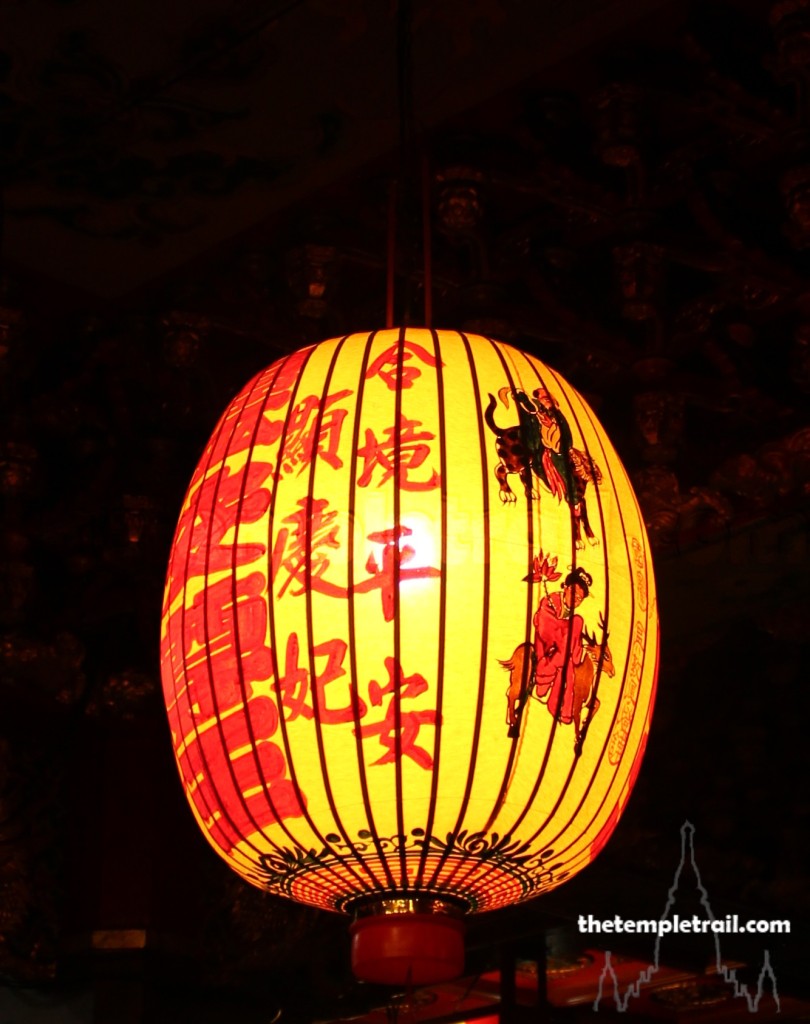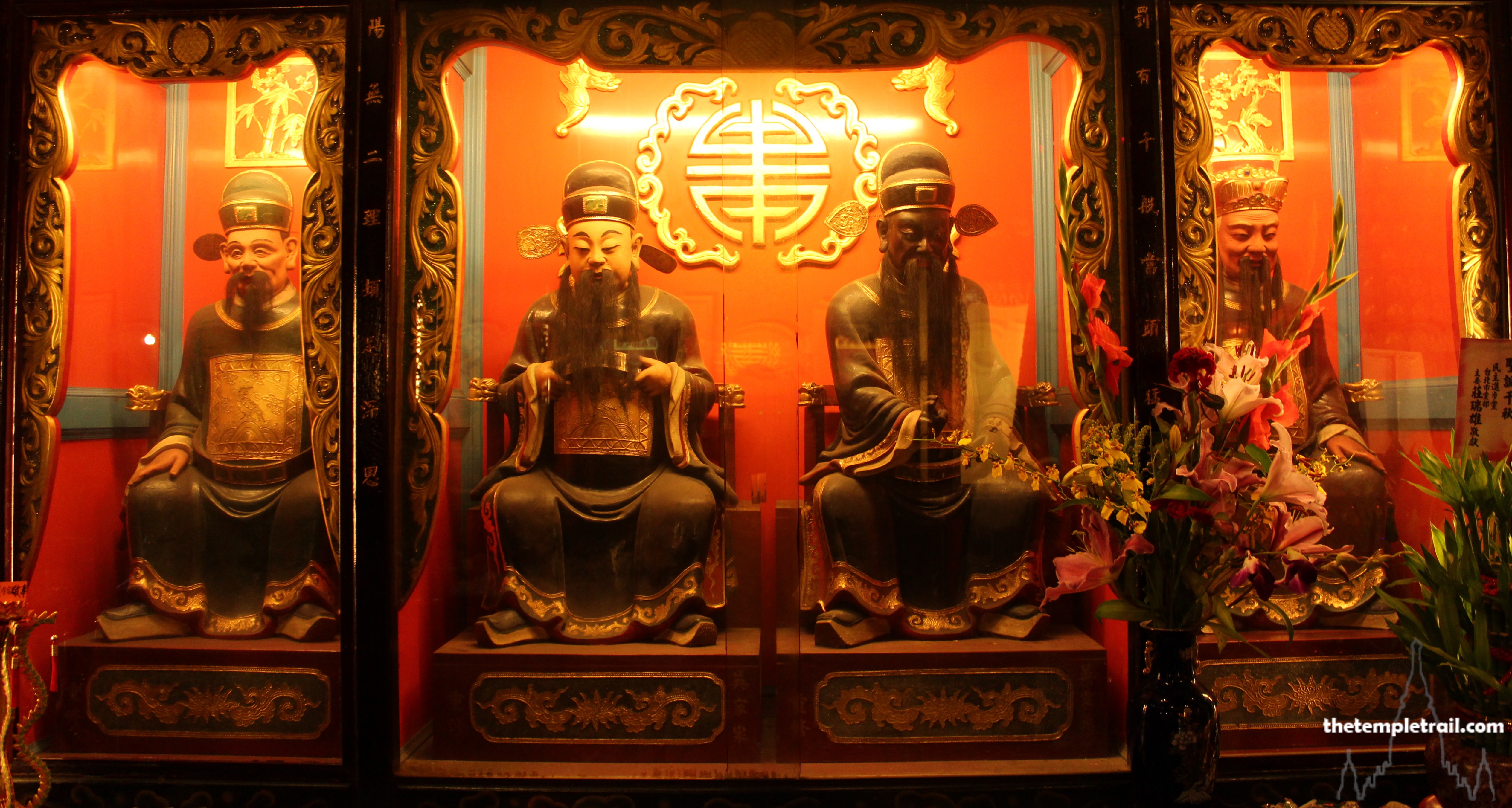The steady drizzle has been slowly soaking you to the bone for the last few hours of meandering through the streets of Taipei. The crumbling concrete blocks provide little shelter as you pass small dark shops that are filled with dusty merchandise. The smell of guā bāo (割包) drifts out from a street-side restaurant. The clam shaped buns and their pork, peanut and greens filling lure you to their bright sign. The salty, sweet richness is too much to resist and after a few bites of your bāo, the world seems a brighter place. Continuing on your journey, a ceremonial gate at the crossing of the next street is strung with yellow and red lanterns, directing you to a small temple sandwiched between two of the dreary 1980s apartment blocks. Ahead of you stands Green Mountain Palace (青山宮 Qīng Shān Gōng), a Taoist temple to a powerful god.
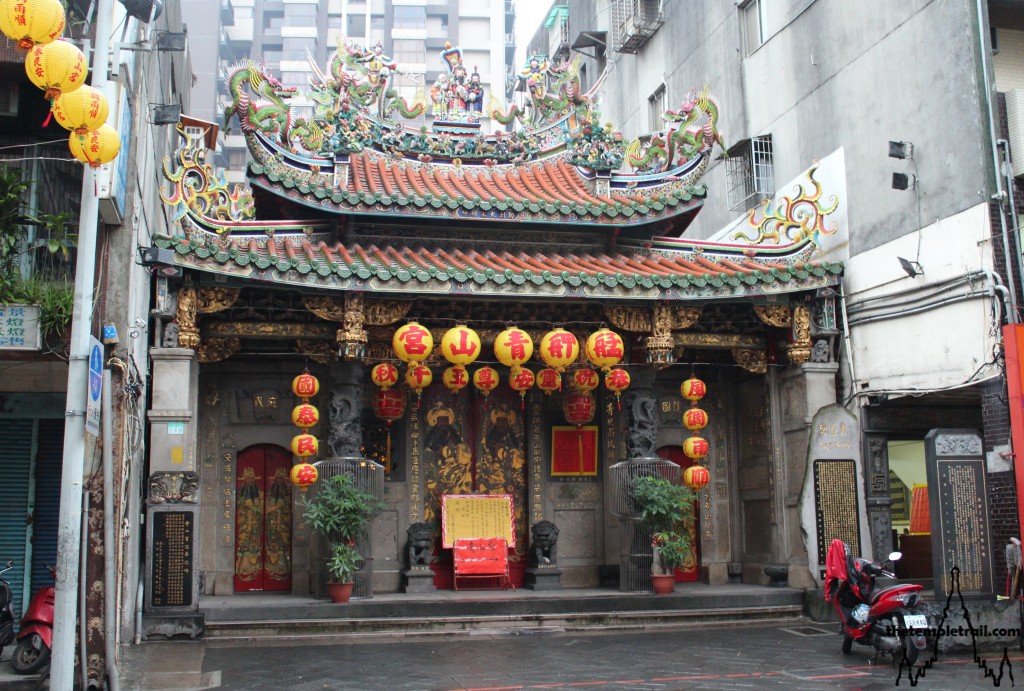
Also Known as Manka Qingshan Temple, it was built by migrants from Fujian province in 1854. The temple honours the King of the Green Mountain (王青山 Wáng Qīngshān), a god who dispels disease and grants divine justice. Qīng shān, or green mountain, is a metaphor for the good life, so the appropriate nature of his name is clear. Also known as Qīngshān língān Zūnwáng (青山靈安尊王), the justice god operates like a higher rank of City God (城隍 Chénghuáng), with various departments under his rule. In life, he was a general of the Three Kingdoms Period (220–280 CE) called Zhāng Gǔn (张滾). Zhāng served the Kingdom of Wu under the king and warlord Sūn Quán. He was dispatched to Quanzhou in Fujian overlooking the island of Taiwan. His worthy and capable skills in running the city led to his deification as a protector against plague, a god who rewards virtue and a punisher of evil. His healing powers are particularly respected and during the SARS epidemic, many people came to the temple to protect themselves with his blessing.
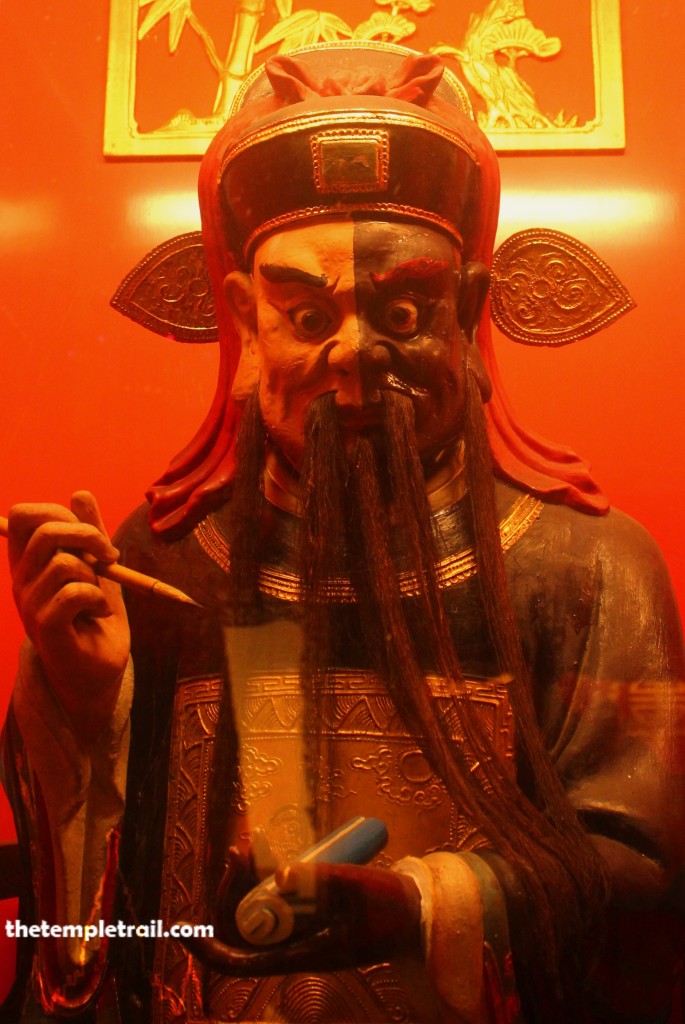
The temple itself was built here as a result of his image being brought from the mainland by fishermen from Hui-an. While carrying the statue through the city, they found they could move no further. The image could not be shifted. This was taken as a sign that the god wanted to stay here. After consulting oracle blocks, it was determined that a temple should be built to house the god. As there was a plague ravaging the area at the time, his followers increased and the ranks of worshippers swelled. This allowed for a swift influx of funds with which to build the temple. The temple also honours the Pat-Ka-Tsiòng (八家將 Bā Jiā Jiàng), or Eight Infernal Generals who act as policemen in the affairs of the dead. The temple has a strong function for praying for the recently deceased. The Pat-Ka-Tsiòng are protectors against evil spirits and they are made up of four military generals and the Gods of the Four Seasons. During the festivities for Wáng Qīngshān’s birthday on the 22nd day of the 10th lunar month, traditional Taiwanese dance troupes dress as the Pat-Ka-Tsiòng and perform ritual dances. During this birthday celebration, delegations from other temples around the city come to represent their respective gods at the festival.
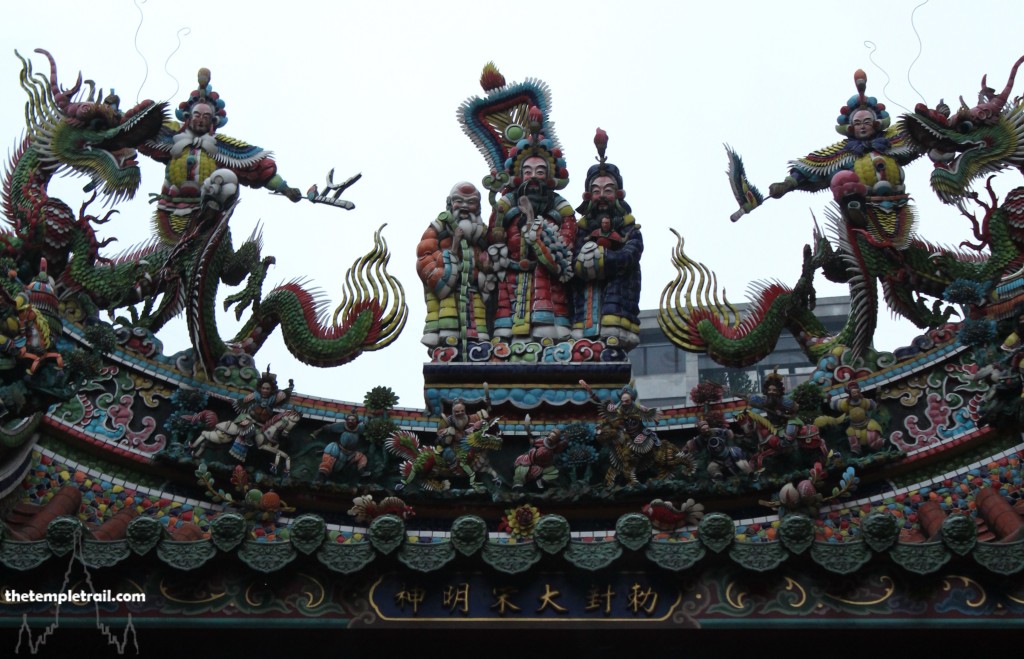
Standing outside the temple looking at the façade from 1938, your eye is drawn to the dazzlingly ornate roof. Temples in Taiwan did not suffer from the impact of the Cultural Revolution, unlike those on the mainland. This has resulted in a continuation of highly elaborate roofing. The dragons and deities cavort across the sloping roof, but the centre is occupied by the Three Lucky Stars (三星 Sān Xīng). Prosperity, Status and Longevity (福祿壽 Fú Lù Shòu) are personified as three men. This Ming Dynasty tradition has continued through the years and the three star gods are universally adored. Here, they are lined up in their traditional order with Fú to your right and Shòu to your left. Fú (Prosperity) is represented by Yang Cheng (楊成 Yáng Chéng), a Western Han Dynasty governor. He usually carries a child and is dressed as a scholar. Lù (Status) is personified in Immortal Zhang (張仙 Zhāng Xiān), a Shu Dynasty government official who pursued the Tao (道 Dào). He is dressed as a mandarin and presides over the Imperial Examinations and the subsequent rank that success would provide. Shòu (Longevity) is represented by the mythical Old Immortal of the South Pole (南極仙翁 Nánjí Xiān Wēng). Said to have been born as an old man after ten years in his mother’s womb, he presides over human life span. He is depicted as a smiling old man with a huge forehead carrying a peach (symbolic of a long life). After casting your eye over these figures, you make your way past the shut front doors and the door gods that guard them. In front of them, two Japanese-style stone lions denote the mixed heritage of Taiwan. The functional entrance is at the side through the concrete eye sore to the right.
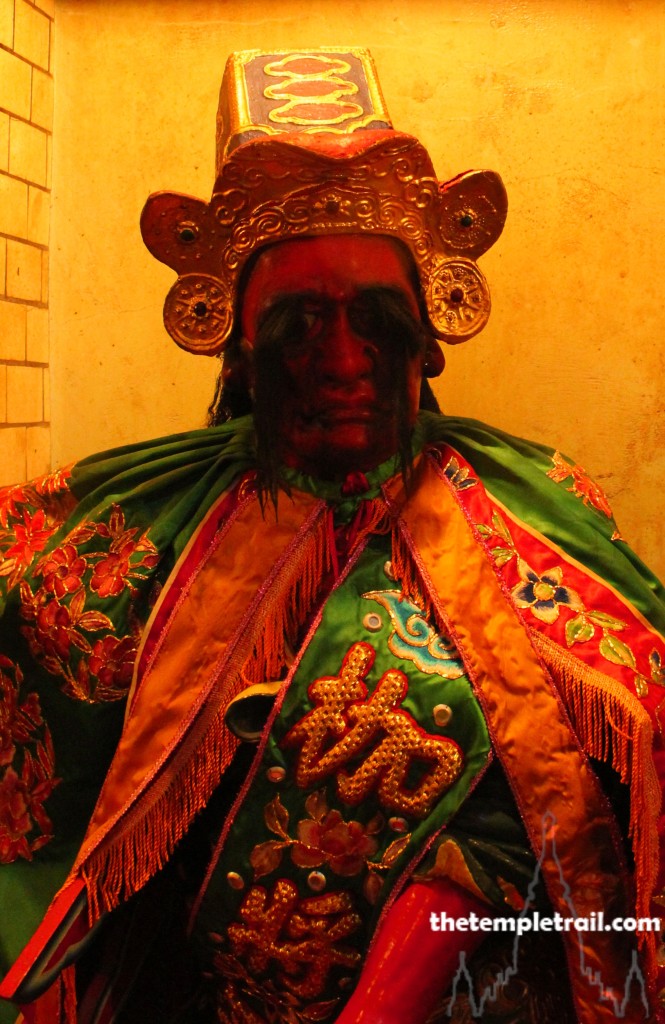
The corridor is not much more than a square grey tunnel that acts as the temple keepers’ makeshift living room. At the far end an octagonal door leads further into the temple, but you opt to take the first left into the first hall that lies behind the entrance gates. The temple is designed on a three hall layout, with the first two being the biggest. Constructed of wood and stone, the columns are actually recycled from stone from the old Yuanshan Shinto Shrine. Darkness envelops you as you walk into the hall. Mysterious faces glare out of cabinets and a sinister atmosphere seems to descend upon you. As you walk in you notice that either side of the room stand two gaunt figures with long black eyebrows covering their faces. One is red-skinned and the other green. These two set the mood for the rest of the hall. The red-skinned figure is Gold Cangue (金枷 Jīn Jiā). A cangue is a wooden pillory-like board worn by criminals around the neck as punishment. They would have to walk around wearing it. Opposite Jīn Jiā is his counterpart; the green-skinned Silver Lock (銀鎖 Yín Suǒ) these two underworld deities represent the kind of figures you encounter in this hall.
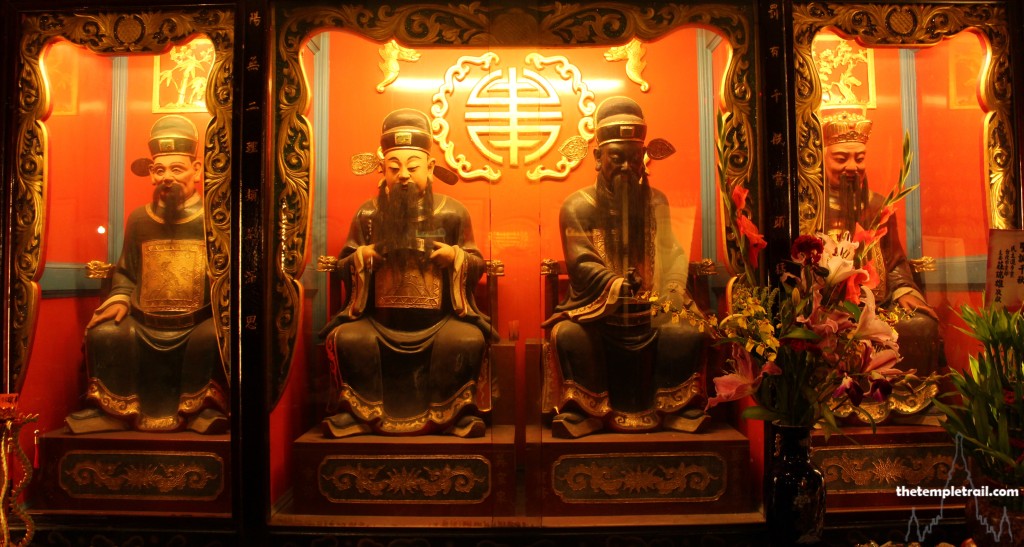
The two sides are lined with officials of the afterlife with various tasks. This is part of the Justice Ministry that is presided over by Wáng Qīngshān. They have their names emblazoned above the cabinet they reside in. These eight division secretaries manage the Yin Yang Department (陰陽司 Yīnyáng Sī), Inspection Department (監察司 Jiānchá Sī), Quick Report Department (速報司 Sùbào Sī), Longevity Department (長壽司 Cháng Shòusī), Reward Virtue Department (獎善司 Jiǎng Shànsī), Punishment of Evil Department (罰惡司 Fá È Sī), Virtuous Good Fortune Department (福德司 Fú Dé Sī), Increase Status Department (增祿司 Zēng Lù Sī). These secretaries represent the various divisions of the bureaucracy of hell. Hell also has two major magistrates. The Civil Magistrate (文判官 Wén Pàn Guān investigates good and evil, and determines how long a person can live. He keeps records in the book of life and death. His counterpart, the Martial Magistrate (武判官 Wǔ Pàn Guān), escorts the ghosts in the role of a psychopomp. At the end of the hall a golden dragon peers out from the central altar to Wáng Qīngshān. This beast seems to be watching you and you feel that it is time to move on out of the room.
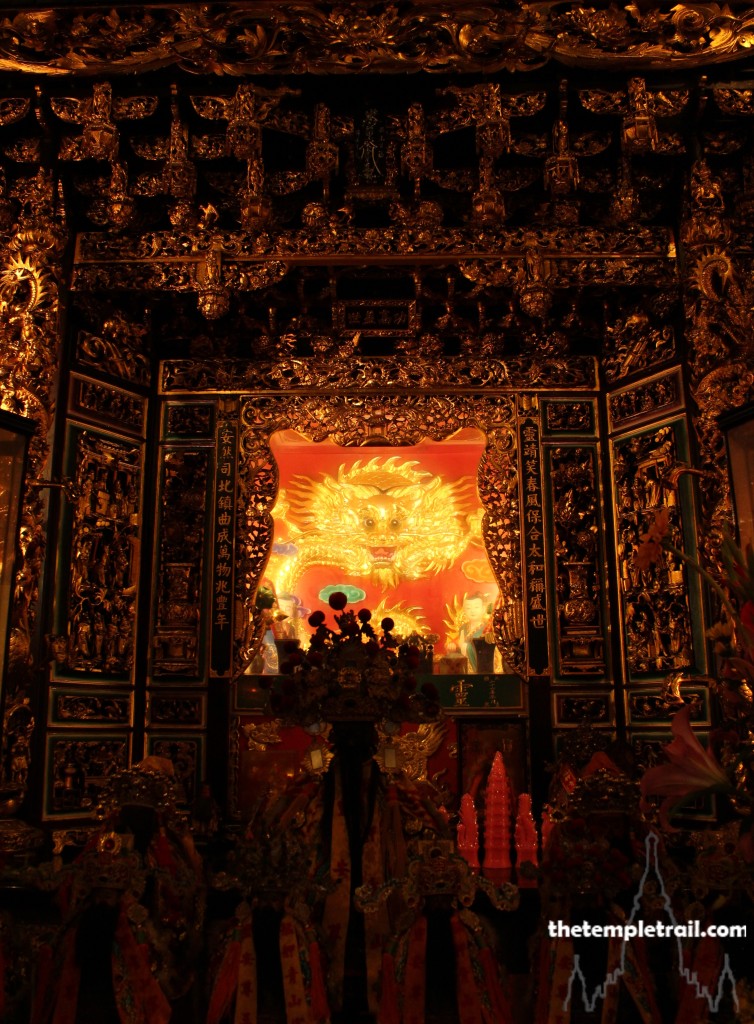
Taking a short passage at the back of the hall, you stand next to an open roofed section that contains a fish pond. This gives you a welcome respite from the heaviness of the temple atmosphere. Looking up into the darkening skies, you have been rewarded with a truly mood appropriate day. Turning around from the grey firmament, you now look into the second chamber. To your right and left are two large figures that are normally part of the festival celebrations here. These two guardians are the Seventh Lord (Qī Yé 七爺) and the Eighth Lord (Bā Yé 八爺). They are also known as the Black and White Impermanence (黑白無常 Hēibái Wúcháng). These two lords are also psychopomps who must bring the spirits of the dead to the underworld for judgement. Although normally white-faced and black-faced, these two both have black faces. Their robes and stature give away their identities despite their similar faces.
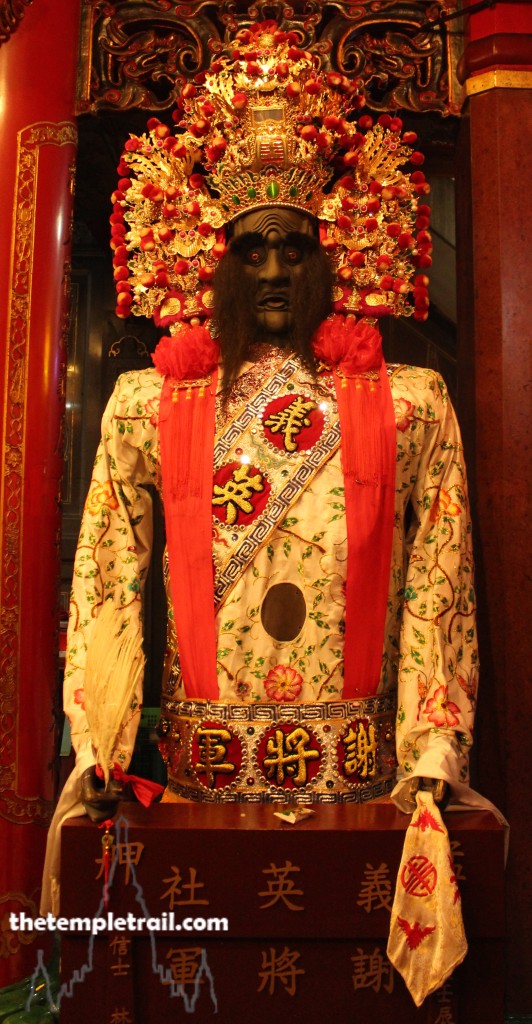
The lord to your right towers above you and is called General Xie (謝爺 Xiè Yé). This tall white robed figure is responsible for catching good ghosts in his role as the Catching Lord. He rewards the good with gold pieces. His partner to your left is stout in stature and is dressed in a black robe. His name is General Fan (范爺 Fàn Yé) and his responsibility lies with the wicked spirits as he is the Arresting Lord. These two guardians were often heard in and around the temple by the superstitious, leading to them being formally installed in the temple. Criminals have tended to avoid the temple environs for fear of meeting them. The tall, thin lord and the short, fat lord both have fearsome visages to frighten the wicked and repel evil spirits from the mortal realm.
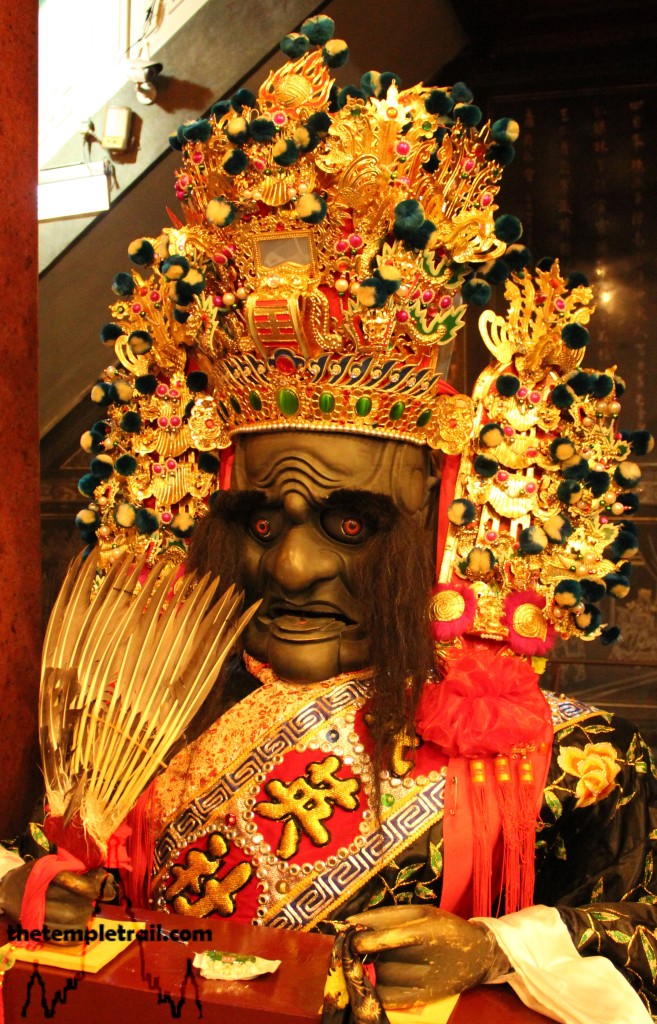
Passing the two lords, you approach the offering table and the magnificent altar that it rests before. The altar is huge and golden. Intricate gilded woodwork frames the main image of the temple. A small, pink-faced figure dressed in orange robes looks out from his protective glass-fronted box. Flanked by attendants and surrounded by gods, Wáng Qīngshān holds court in this chamber. The god that cures you of ills and looks after your interests in the afterlife is a simple and small figure compared to the other images in the temple. He is, however, one of the most compelling. Looking into his face, you somehow understand the devotion of the local people to this diminutive god.
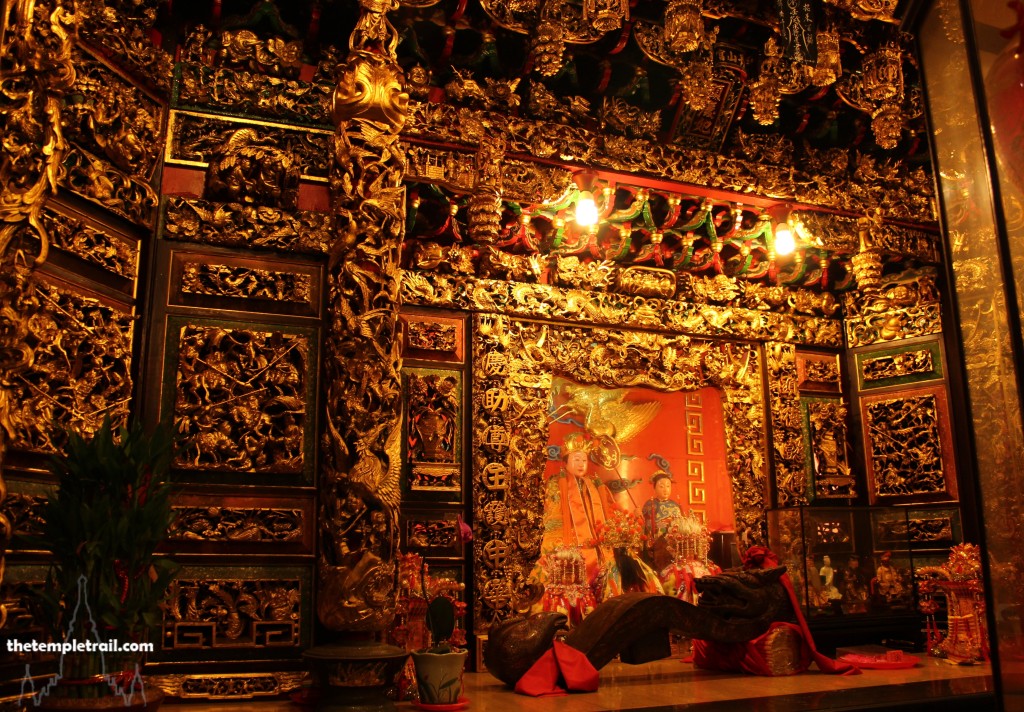
Taking the right-hand exit, you pass through the octagonal portal and back into the staff area. Out at the front of the temple you find yourself looking at the façade once again. The quiet grey day is punctured by the bright temple front. The space in the street before the temple is serene and strangely still. During festival time, this spot is a raucous riot of noise, sound and colour. It is where the spirits and demons are quelled by the mystic forces that are contained within the building. A quiet descends upon you. You feel safe and protected by the fearsome beings that subdue evil. No malignant forces can harm you here and, having paid your respects to Wáng Qīngshān, you take that protective force with you on your walk back through the city streets.
